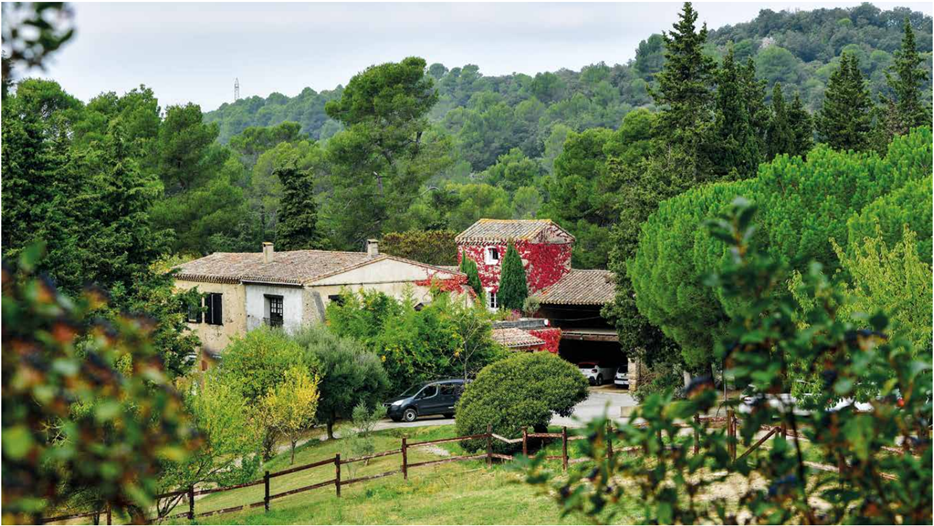
Château Martinolles comprises 130 hectares of woodland, fields, olive groves, orchards and vines in the Limoux appellation (90 hectares), grown in the commune of Saint Hilaire, 15 kilometres to the south of Carcassonne. This small village in the Aude is famous for being the cradle of sparkling wine in France. In the 16th Century, in the cellars for the Abbey of Saint-Hilaire which adjoins the domaine, the Benedictine monks discovered the principal of the second fermentation in the bottle. A manuscript dated 1544 attests to it: Blanquette is the first sparkling wine in the world, almost a century before the invention of Champagne.
Château Martinolles is also the realisation of a long-held dream of Jean-Claude Mas: to make sparkling wines like those whose richness he discovered in Italy, guided by his mentor the transalpine producer and international consultant Giorgio Grai. Seduced by the elegance of these wines of celebration, the French winemaker and negociant hoped to add this string to his bow, and the slopes of Martinolles offered him this opportunity in 2011. The man who relishes a challenge took up the one which this terroir, rich in history, offered him: appropriate an ancestral know-how to leave his trademark upon it, without getting lathered!
After more than 10 years, his efforts have paid off. The quality has increased steadily and the cuvées are voted for by amateur wine lovers and professionals alike. The Chateau Martinolles also has overseen a renewal of the still wines of the region producing within the AOP Limoux a white and a red, both complex and full-bodied, and which do not have anything to fear from more celebrated crus.
“In my early beginnings as an aspiring winemaker of great sparkling wines, it was particularly exciting to start this adventure in Saint-Hilaire, where it all started more than five hundred years ago. I am proud to be a part of this history in creating attractive bottles in the traditional method, in the true spirit of ‘everyday luxury’. With my team we have put together a range of great wines at affordable prices, special occasion wines but for everyday enjoyment. The Chardonnay and Chenin have proved their potential for celebrating Limoux terroirs.” Jean-Claude Mas
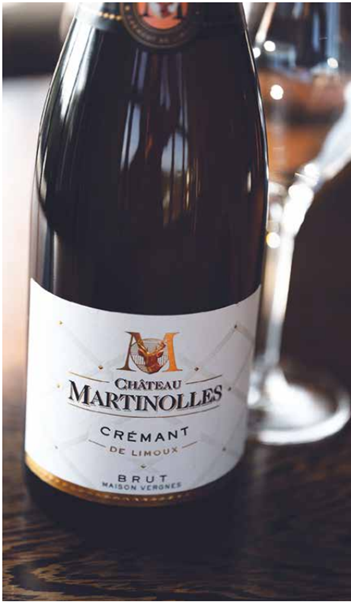
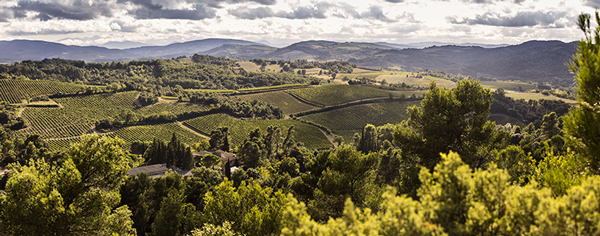
The Limoux lies at the crossroads of the Pyrenees and Mediterranean terroirs
Situated in the foothills of the Pyrenees, the Martinolles vineyards wind around gentle hills which form a natural amphitheater around the winery.
Mediterranean, the climate also benefits from oceanic influences
If the sunlight is usually abundant here, the winds from the west also bring the rain. Here the Cevennes do not have an influence, but it receives an annual rainfall of 700-800mm on average, which is spread out throughout the year. The shape of the valley helps the air to circulate which tempers the summer sunshine.
On the limestone-clay slopes between 200 to 300 metres in altitude, the days are shorter than on the plain. The large differences in temperature between day and night allow the berries a longer ripening.
The grapes harvested later than in the Hérault valley, keep an attractive acidity whilst showing a good phenolic maturity, that of the skins and the pips, which is optimal. They are thus able to produce wines with remarkable balance.
Grape plantings adapted to the variations of the sun
White grapes: 35% Chardonnay, 14% Mauzac and 14% Chenin.
Red grapes: 17% Pinot Noir and the remaining 20% divided between Cabernet Franc, Cabernet Sauvignon, Malbec, Syrah and Merlot.
Chardonnay, which is the dominant grape planted, grows happily everywhere on the estate. On the richer soils, at the edge of the property and near to the stream where the proportion of clay is the highest, it is used for the sparkling wines. The slopes which are sand / clay / limestone is very well draining and on the limestone clay soils, the Chardonnay is used for the still wines. Chenin Blanc, less sensitive to frost than Chardonnay, blossoms on the parcels on the richest soils. Its acidity makes it particularly attractive for the Crémants.
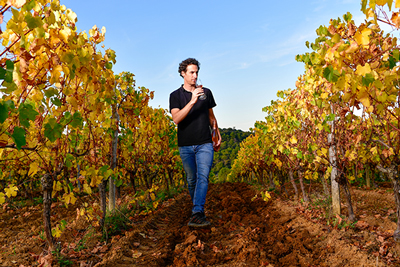
A site of naturally great biodiversity
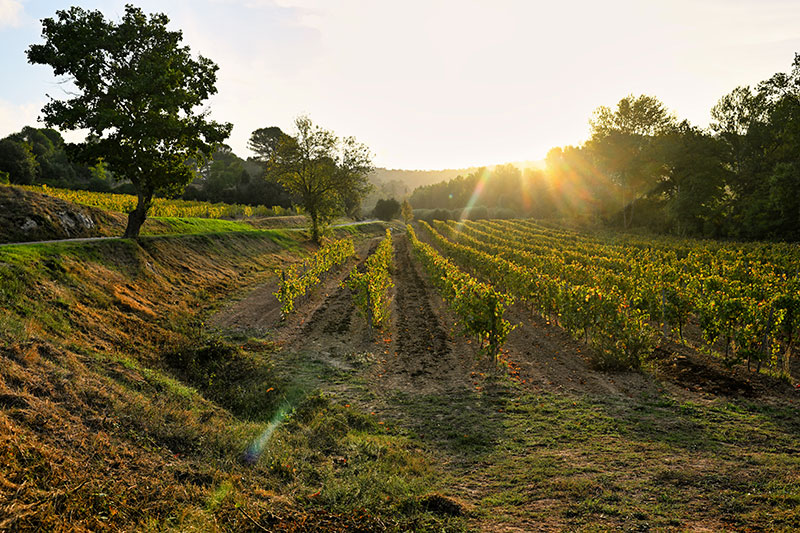
Over the 130 hectares of the domaine, mushrooms grow alongside olive trees, fruit trees, pines and oaks. For each hectare of vines, there is a hectare of wood and scrubland, cris-crossed by streams, offering an exceptional biodiversity which it is essential to preserve.
Certified high environmental value (HVE) level 3, the vineyards use agroecology. In winter, the vines are covered by a vegetal cover. No herbicides are used, the soils are worked by machine, whilst the pruning may be mechanical or by hand. The maintaining of the hedges and the streams creates refuges for a variety of fauna.
The excellent state of the grapes and a balanced ecosystem, where human intervention is as gently as possible, allows us to limit the disease control treatments on the vines.
Ten years of reflections and improvements in service to the terroir
At Martinolles, as in all his projects, Jean-Claude Mas prefers the ‘family godfather’ approach to that of the financial investor’s cold logic, he invests for the long term, without expecting immediate returns. Thanks to Bastien Lalauze, director at the domaine since its acquisition in 2011, and a team of seven full time staff augmented by seasonal teams, important improvements have taken place, both in the vines and in the winery.
In the vines, renewal and care
Selective pulling up and replanting has allowed a rejuvenation of the vineyards, whilst preserving the high-quality old vines. The use of sheep manure, vegetable compost and organic fertilizer have been brought to the soils. In place since the outset, this long-term regenerative work continues but is already bearing fruit: the health of the plants improves, their vigour is stronger.
In the winery, high precision winemaking
To produce bubbles, you need to be strict. The wines of celebration require real rigour. Inspired by Italy, Jean Claude Mas has known how to combine the local winemaking methods and those of Champagne, from hand harvesting in 150kg baskets to the exact dosage of liqueur d’expédition via a long and gentle grape pressing, which does not damage the grapes, and from that only selecting the top cuvées from which to make the sparkling wines.
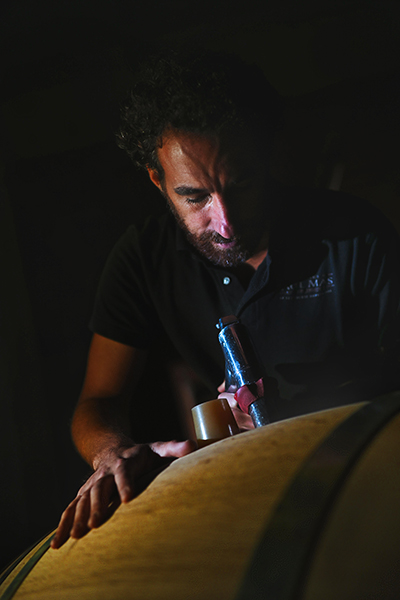
Convinced that traditional method requires the latest technology, Jean-Claude Mas is constantly updating his winery equipment. The base wines are made and matured in concrete vats, all apart from the Grande Reserve Cuvée which is part-fermented in oak.
After the alcoholic first fermentation, a second fermentation in the bottle is kicked off by the addition of liqueur de tirage. The wine ‘takes a mousse’ while the bottles rest on their racks over at least 12 months for Blanquette de Limoux, and up to 48 months for the Crémant Grande Reserve. The still wines are vinified in concrete vats or in Tronconic oak and matured in a mixture of French and American oak barrels.
Après la fermentation dite alcoolique, une seconde fermentation en bouteille est provoquée en ajoutant une liqueur de tirage. Le vin « prend mousse » pendant que les bouteilles reposent sur lattes pendant au moins douze mois pour la Blanquette de Limoux, jusqu’à 48 pour le Crémant Grande Réserve.
Les vins tranquilles sont vinifiés dans des cuves inox ou en bois tronconiques et élevés dans des fûts de chêne français et américains.
À la cave, une vinification de haute précision
Pour produire des bulles, il faut être carré : ces vins de fête exigent de la rigueur. Inspiré par l’Italie, Jean-Claude Mas a su s’approprier les technique et la méthode locale et champenoise, de la récolte manuelle en cagettes de 150 kg jusqu’au juste dosage de la liqueur d’expédition, en passant par un pressurage en grappes entières long et doux, à flots constants, qui respecte les raisins, et en ne sélectionnant que les têtes de cuvée pour les effervescents.



